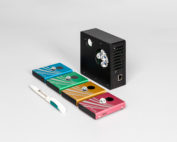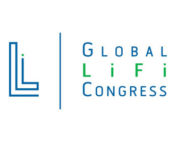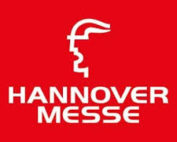What is LiFi?
LiFi (=light fidelity) is an optical wireless transmission and enables mobile communication with light. The technology is used as a complement to radio, when higher user density requires more capacity. Moreover, LiFi fulfills special safety and electromagnetic compatibility requirements.
The Fraunhofer HHI has developed LiFi from its basics, is contributing to standardization and supports its transfer into applications. Pilot projects are currently taking place with end users in real operating environments.
LiFi technology – High Speed
Internet from your ceiling lamp
LiFi technology – High Speed Internet from your ceiling lamp
A powerful technology

The extremely powerful LiFi technology provides a higher bandwith.
Nowadays, a LiFi cell has 1 to 10 m diameter and delivers data rates from 100 Mbit/s to 1 Gbit/s. LiFi is based on commercially available high-performance LEDs, which are also used for lighting, and large-area photodiodes.
Technology and costs are similar to those in radio: orthogonal frequency division multiplexing (OFDM) and adaptive transmission are used as well as multiple-input multiple-output (MIMO), relay function and handover between adjecent access points.
LiFi Standardization
Since 2015, the Fraunhofer Heinrich Hertz Institute has been working continuously on the ongoing LiFi standardization activities. Compared to the previous IEEE standard 802.15.7-2011, the current LiFi standard projects ITU-T G.9991, IEEE P802.15.13 and P802.11bb introduce a number of new technologies (OFDM, Adaptive Transmission, MIMO, Handover and Relaying) which make LiFi similarly powerful like radio-based mobile communications.
Technically, these projects address similar goals. ITU-T G.9991 is based on the well-known home networking standard G.hn G.hn (G.996x) which is also used in Powerline-Modems. IEEE P802.15.13 (2017-2020) targets specialized industrial applications characterized by small, high-value-added quantities. IEEE P802.11bb (2018-2022) focuses on future mass applications that make each luminare a wireless access point.
Every smartphone or IoT device then can access the Internet via light. For this, additional requirements must be met, such as low cost and low energy consumption. In this way, LiFi can be used in traditional mobile networks, such as Wi-Fi and 4G/5G, to further increase capacity and user numbers.
Whats new?
New LiFi conference room opened at Fraunhofer HHI
The Fraunhofer Heinrich Hertz Institute HHI has made further developments in optical wireless communication, also known as LiFi, [...]
Fraunhofer HHI introduces new USB LiFi modules with up to 1 Gbit/s
The Fraunhofer Heinrich Hertz Institute HHI was the first to succeed in developing a USB-operated LiFi system with low power consumption, [...]
Fraunhofer HHI presents research results at the Global LiFi Congress in Paris
The Global LiFi Congress will be held for the second time, after its premier in 2018. This year it will take place, from June 12 to 13, in Paris. [...]
Berlin Center for Digital Transformation at Hannover Messe 2019
The digitization of production provides companies with a high degree of flexibility. This is done by the networking of production systems and processes. [...]







